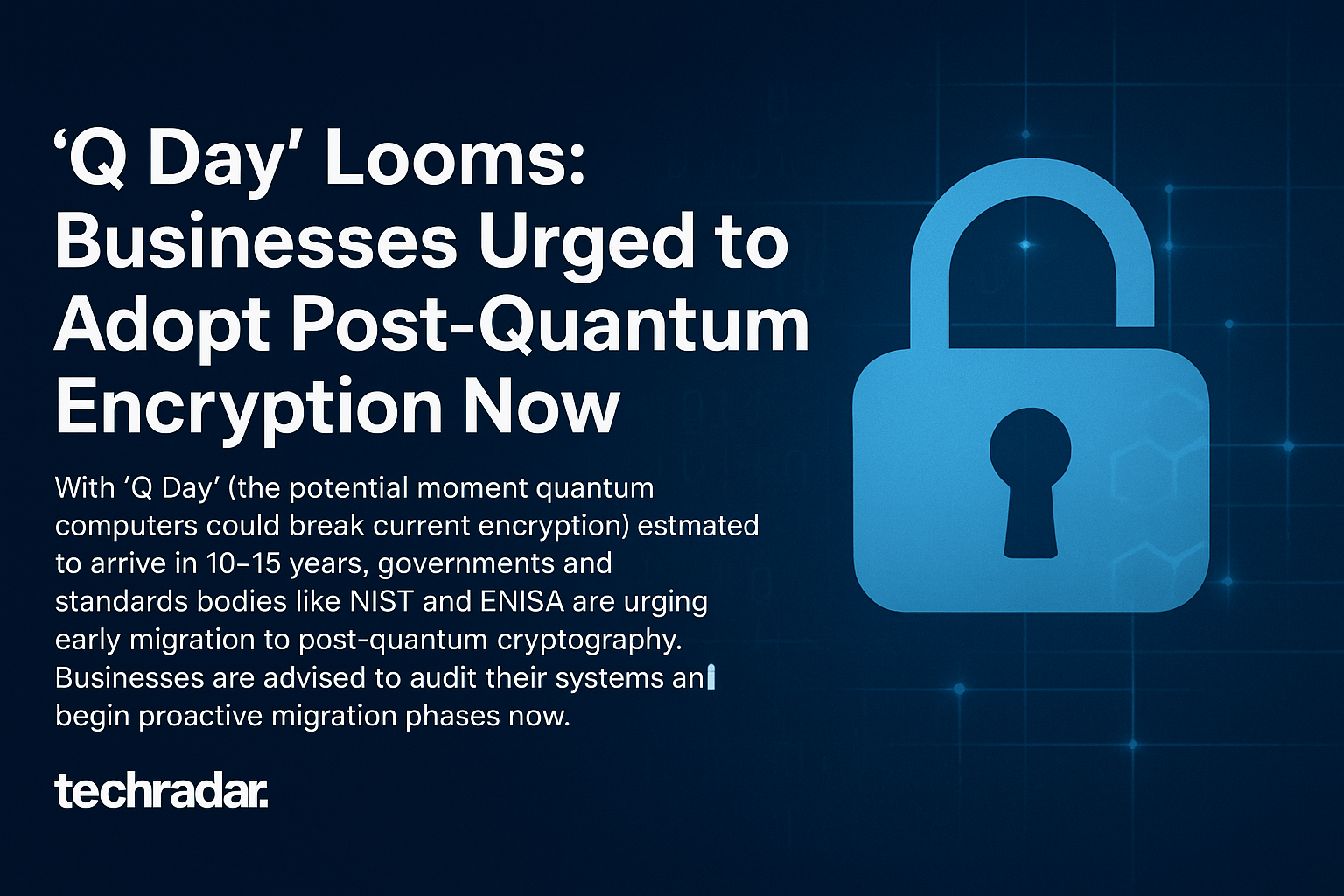For decades, the cryptographic systems underpinning our digital world have been built on assumptions about how long it would take classical computers to break them. Public-key algorithms like RSA and ECC, for example, are considered secure because factoring large numbers or solving discrete logarithms is computationally infeasible for today’s machines. But that confidence crumbles in the face of quantum computing.
“Q Day” — the anticipated point when a sufficiently powerful quantum computer can break widely used public-key encryption — may still be 10–15 years away, but the countdown has begun. Governments, security agencies, and standards bodies like the U.S. National Institute of Standards and Technology (NIST) and the European Union Agency for Cybersecurity (ENISA) are sounding the alarm: start preparing now.
What Exactly Is “Q Day”?
“Q Day” is shorthand for the day quantum computers render current public-key encryption obsolete. Using Shor’s algorithm, a large-scale quantum computer could factor RSA keys or solve ECC problems exponentially faster than classical systems. That would mean digital signatures, secure connections, and encrypted communications could be compromised virtually overnight.
Critically, adversaries don’t have to wait for Q Day to begin causing damage. They can “harvest now, decrypt later” — capturing encrypted data today with the expectation of decrypting it once quantum capabilities arrive. Sensitive information with a long shelf life (government data, intellectual property, health records) is particularly at risk.
The Push for Post-Quantum Cryptography
To address this looming threat, NIST launched a multi-year competition to standardize post-quantum cryptography (PQC) algorithms. In 2022, NIST announced the first group of algorithms to be standardized, including CRYSTALS-Kyber for key establishment and CRYSTALS-Dilithium for digital signatures. ENISA and other bodies have issued similar recommendations urging organizations to plan migration paths to these quantum-resistant standards.
The message is clear: start migrating now. Cryptographic transitions are complex, expensive, and time-consuming. Waiting until “Q Day” is near will almost certainly be too late.
Steps Businesses Should Take Today
-
Inventory Your Cryptography
Conduct a full audit of your organization’s cryptographic assets. Identify where public-key encryption is used (TLS certificates, VPNs, email security, software updates, IoT devices, etc.) and what data could be compromised in the future. -
Assess Data Longevity
Determine which data needs to remain confidential for years or decades. Even if the information seems low-value today, consider regulatory requirements, trade secrets, and personal data that could be sensitive long-term. -
Develop a Migration Plan
Begin testing PQC algorithms in your environment. Evaluate hardware and software dependencies, performance impacts, and compatibility issues. Hybrid approaches — combining classical and quantum-resistant methods — may be an interim solution. -
Engage with Vendors and Partners
Ask your technology suppliers about their PQC roadmaps. Migration will often require coordinated changes across your supply chain, cloud providers, and third-party integrations. -
Stay Informed on Standards
Monitor updates from NIST, ENISA, and national cybersecurity authorities. As PQC standards evolve, keeping your roadmap aligned will save time and resources.
The Business Case for Early Action
Post-quantum readiness isn’t just a technical issue; it’s a strategic one. Organizations that act early will protect sensitive data, maintain customer trust, and avoid regulatory penalties. Those that delay risk data exposure, expensive emergency migrations, and reputational damage.
Transitioning to post-quantum cryptography can take years. Early movers will gain a competitive advantage by embedding PQC into their security architectures gradually rather than scrambling at the last minute.
Looking Ahead
Quantum computing holds enormous promise — from accelerating drug discovery to optimizing complex logistics. But its disruptive power on cryptography can’t be ignored. “Q Day” may not arrive tomorrow, but it is coming. The time to prepare is now.
By auditing systems, planning migrations, and adopting PQC standards proactively, businesses can turn a looming crisis into an opportunity to strengthen their security posture for the next era of computing.




